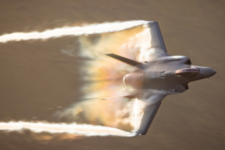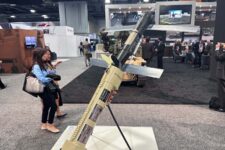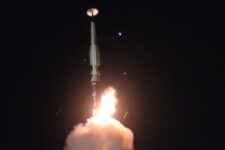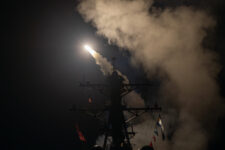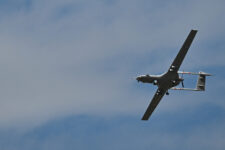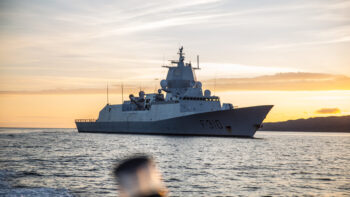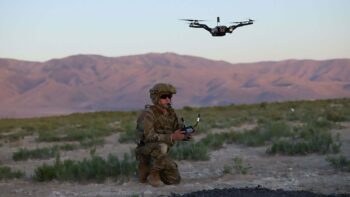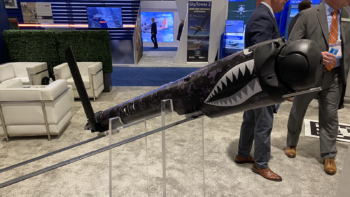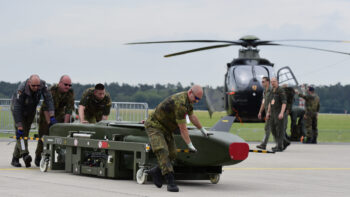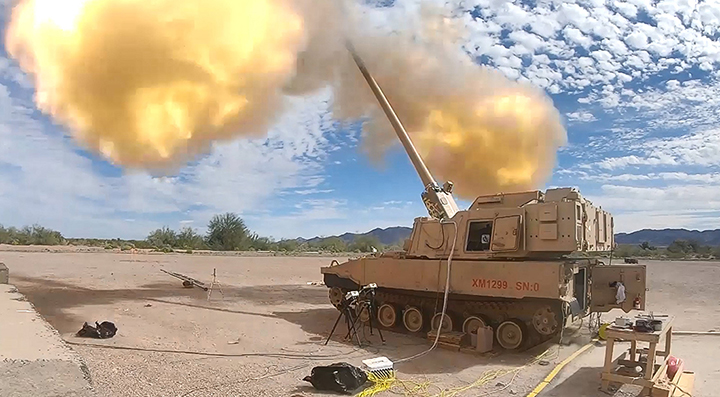
The Army has cancelled work on its Extended Range Cannon Artillery prototypes and is looking to industry for exiting options. (US Army photo)
WASHINGTON — US Army leaders unveiled a $185.9 billion spending plan today they say is designed to keep most weapon modernization programs moving ahead, despite cutting bait on a high-profile artillery program and shifting aviation dollars around.
The White House delivered its fiscal 2025 budget request to lawmakers earlier today, with $849.8 billion in discretionary spending included for the Pentagon. While that budget plan is largely hypothetical and dependent on several moving — or currently frozen — parts in Congress, the Army’s portion keeps most of its big-ticket modernization program on track, increases training in the Indo-Pacific region and features initiatives to improve soldier housing.
“Every year have to make some very difficult trade-offs, particularly as we’re trying to maintain pace on modernization [and] we’re trying to fully fund, of course, our military personnel account, as the cost of our military personnel is going up with the pay increase,” Army Under Secretary Gabe Camarillo told reporters March 8 during a budget preview event.
“At the same time, we wanted to make a significant investment in barracks housing,” he said, referencing $2.1 billion between 2025-2030. “So…we had to potentially look at other areas of [operations and maintenance] O&M spending that are not tied to readiness” to make cuts.
For more coverage of the FY25 budget release, click here.
As the plan stands now, for FY25 the Army is requesting $70.7 billion for its military personnel coffers to support a force with 442,3000 active-duty soldiers, 325,000 Army National Guard soldiers and 175,800 reservists.
The service is also requesting $71.4 billion for its O&M accounts, $14.1 billion for research and development (R&D) efforts, $24.4 billion for weapon procurement, and $3.9 billion for military construction.
When it comes to the requested R&D pot, the FY25 ask is about $1.7 billion less than the Army requested for FY24. Camarillo said the dip is largely due to moving some items into production and rebalancing the aviation portfolio.
Extended Range Cannon Artillery Shut Down
Today’s budget submission highlights one new weapon decision: The Army has halted work on its Extended Range Cannon Artillery (ERCA) platform. For several years, it had been integrating, and testing out, the additional of a 30-foot, 58-caliber gun tube to BAE Systems’ Paladin M109A7 self-propelled howitzer. The goal was to use the modified artillery platform to launch 155-mm rounds out to 70km, an increase from the current max range of up to 30km.
After the ERCA platform encountered technical challenges during live fire testing, including excessive wear and tear on the cannon, the Army launched a tactical fires study designed, in part, to determine what to do about the modified launcher and the entire portfolio.
“We concluded the prototyping activity last fall, unfortunately, [it was] not successful enough to go straight into production,” Army acquisition head Doug Bush said during the budget preview.
However, the “exhaustive” tactical fires study revalidated the need for a longer-range artillery platform. Hence, the service will issue a request for information shortly for full-up systems — platform and ammunition — with the goal of conducting initial evaluations of those candidates this summer, he added. If those demos prove fruitful, the service wants to spend $55 million in FY25 for a more detailed comparison with plans to make a final production downselect in the future.
RELATED: Exclusive: Army Vice Chief talks network evolution, possible C-UAS shakeup and other priorities
“It’s a shift from developing something new to working with what is available both domestically or internationally to get… the range and volume,” Bush added. “So, we want to find a different way to get there.”
While that is a big shakeup, the ERCA effort also included development work on a mix of new munitions and a supercharged propellant. Bush said work on those fronts will continue for now, but did not detail the exact spending plan.
Other changes to the Army’s artillery portfolio may still be coming, but industry shouldn’t look for clues in this budget document.
“That [tactical fires] study is informing discussions and debates, but nothing that’s baked into ‘25, which of course was finished last year,” Bush said.
Taking Flight
In early February, the Army announced a major aviation shakeup when it unveiled plans to cancel its next generation Future Attack Reconnaissance Aircraft (FARA) program, end production on the UH-60 V Black Hawk, keep General Electric’s Improved Turbine Engine Program (ITEP) in development, and phase the Shadow and Raven unmanned aerial systems out of the fleet.
The service predicts those four decision points freed up $4.5 billion between FY25-30, money the service plans to reinvest in several areas.
“It wasn’t really an effort to achieve savings, it was an effort…to make sure that we were adapting to what we saw on the changing battlefield, and, secondly, to address industrial base concerns regarding the end of production on Chinook and the Black Hawk platform,” Camarillo said.
“The overwhelming preponderance of whatever resources were reallocated as a result of this decision, they were overwhelmingly reinvested in the aviation portfolio [but] there was a very small amount that we were able to utilize…as we plus-upped our investment in barracks and soldier housing,” he later added.
Army officials previously said the FARA savings would help give Boeing the greenlight to formally begin production on the CH-47F Block II Chinook, but Bush revealed that the budget request support production of six aircraft per year between FY25 and FY30, Bush said. (That is in addition to MH-47 Chinook production for Special Operations Command.)
The service also plans to ink a new multi-year procurement deal with Lockheed-Sikorsky for the UH-60M Black Hawk line. Bush said that deal will likely cover FY27, FY28 and FY29 with $800 million per year for 24 helos.
Army officials are also expected to spend more money developing and buying unmanned aerial reconnaissance systems like the future tactical unmanned systems and launched effects, but those changes were not discussed in length during last week’s media roundtable.
Battlefield Lessons
While many Army leaders have been shy to discuss specific lessons from the ongoing wars in Ukraine and Gaza, they haven’t been quiet about the need to ramp up munitions production.
There are a variety of moving pieces required for the service to get to where it wants to go, including needed dollars in the FY24 budget request and supplemental languishing on Capitol Hill. (The FY24 budget request, for example, includes an ask for dollars and authority to kickstart several multi-year muntion buys).
For the FY25 request, though, the Army is seeking $1.2 billion for Guided Multiple Launch Rocket System (GMLRS) rockets, $492 million to buy 230 Precision Strike Missile Increment 1 (PrSM Inc 1), $171.7 billion for 155-mm munitions, and funds to buy 230 PAC-3 interceptors.
The service also plans to restart testing on the delayed Long-Range Hypersonic Weapon (LRHW) program this summer, an effort the ground service dubs Dark Eagle. In total for FY25, the service is requesting $1.2 billion for hypersonic development and procurement activities.
When it comes to close combat formations, if testing of Microsoft’s Integrated Visual Augmentation System (IVAS) 1.2 is positive, the service wants to spend $256 million for 3,162 units in FY25, along with $98 million for continued development.
IVAS is centered around a militarized version of Microsoft’s HoloLens 2 heads-up and is envisioned to be used on the battlefield, in planning and for training. It is also designed to provide soldiers with a night-vision capability. For now, the service has reversed an earlier push to stop buying the Enhanced Night Vision Goggle-Binocular (ENVG-B), and is asking for about $100 million in procurement dollars in FY25.






